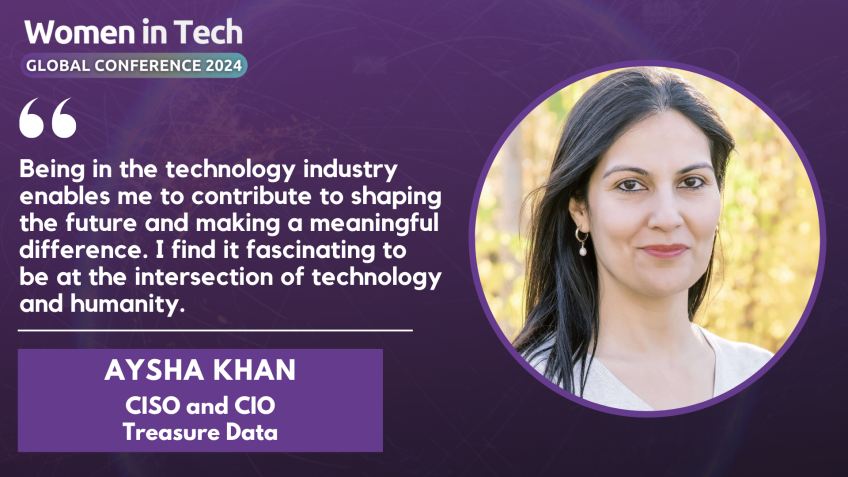Strategies for leading through Uncertainty and Change
Nimmy Nemlin
Technical Program ManagerLeading Through Uncertainty and Change: An Insight Into the VUCA World
In today's fast-paced business environment, leaders need a new approach to navigate and lead through uncertainties and unforeseen changes. Welcome to the world of VUCA – Volatile, Uncertain, Complex, and Ambiguous – a term coined by the U.S. military at the end of the Cold War, now widely used in the business world to describe a challenging and fast-evolving industry landscape.
Understanding VUCA
VUCA stands for Volatile, referring to the rapidness of industry trends and changes. Uncertain implies the unpredictable nature of future events and directions. Complex indicates the numerous factors that need consideration, such as expanding an organization to uncharted territories. Lastly, Ambiguous best describes the unclear and vague scenarios that often arise in business—such as a corporation venturing into an unknown product line.
The Challenges of Managing in a VUCA Environment
With the constant changes comes a fresh set of challenges, including managing varying responses and emotions towards change. People react differently—some are Navigators who seek challenges, some are Critics with valid fears, while others are Bystanders or Victims who may experience emotional trauma. Understanding and empathizing with these reactions as a leader are crucial.
Leading Through Change: A Guide
Moving successfully through change requires moving through a series of emotional stages, often called the change curve. It begins with Denial and Resistance, then Acceptance, and finally Exploration and Commitment. As leaders, understanding your team's emotional stage of the change curve is paramount to offering the right help and encouragement. For instance, during the Resistance stage, leaders should lead by example and focus on the benefits of the change.
In a VUCA world, traditional leadership doesn't suffice. Navigating volatility requires a clear vision, understanding uncertainty involves openness, handling complexity calls for clarity, and facing ambiguity mandates agility and flexibility. By focusing on resilience, adaptability, and collaboration, you can thrive in a VUCA environment.
Key Principles of Leading in a VUCA World
- Remain Visible: Leaders need to be seen by their team, especially during times of turmoil or change.
- Communicate Regularly: Communicating regularly helps in dispelling rumors and provides a sense of connection and direction.
- Stay Connected: Maintain a constant connection with your team to understand their perception of the change.
- Be Authentic: Leaders don't need to know everything—it's okay to be open about your own uncertainties and challenges.
- Put People First: Acknowledge fears and reassure your team. In a time of change, everyone's experiences are critical, so prioritize your team's needs and feelings.
- Create Hope and Optimism: Look for ways to motivate and empower your team. Redirect their focus to things they can control and celebrate each small success.
In Conclusion
Leading through uncertainty isn't straightforward, but with a VUCA perspective, we become better equipped to handle constant, unpredictable changes. By recognizing the emotional phases of change, providing active support, and maintaining transparency, you can steer your team towards resilience and growth. Together, we can weather uncertainty and become stronger in the process.
Questions and Discussions
As we wrap up this exploration of leading through uncertainty, I welcome any questions or discussions on the topic. Feel free to reach out and let's navigate this VUCA world together.
Video Transcription
Jump into that topic. So this is what we are trying to uh going to cover today. First, we'll talk about a brief intro about me and um uh whom this is actually intended to followed by why I'm giving this talk.And what is W A and then I'll talk about some leadership principles that will help the leaders and managers navigate and lead through the uncertainties and some steps to lead through uh change and some of the tips which I applied in my uh professional life. And then we will summarize what we have learned and followed by the Q and decision. So, moving on to the next one about me, I'm uh iIn Emly, I'm a technical program manager at Google. I have more than 12 plus years of experience in the software industry and outside of work, I'm a mom to a six year old and I did my bachelor's in computer science and engineering and I'm originally from India and currently living in Munich, Germany. And my hope is uh I love baking and connecting with um friends and family. And also uh I'm an advocate for diversity and inclusion and being part of various women tech networks. So this is uh like a, a short summary of my journey over the last 12 plus years. So I started as a program analyst training in Cognizant. I worked there for three plus years. And that's when in 2014, I had to move here to Germany.
And uh that was uh also like a major change uh both in my life and in my professional career. And I joined Wire Card, uh a company in payment. Uh maybe you have heard of it already. And uh and that's when I started learning German. And then I moved to Alliance, which is uh a company where I, I was doing test management and project management. So I wrote many hats from developer, test management, project management, product owner. And then I moved to BMW where I was working as a product owner for four years. And then I joined Google uh in Jan 2022. And why I'm doing this because uh it's been a very challenging times. And when I joined Google, I was working for Stadia, which is a cloud gaming services which Google decided to shut it down, unfortunately. Uh So the project which I was working on got shut down and we had made various free orgs and I had uh I think I have two, I had eight managers in one year and uh Google is going through layoffs as you all know. So it's not yet finalized. So I thought, OK, now it's a perfect time to talk about this topic. So it's full of uncertainty.
And uh yeah, but despite all this uh changes like the new normal, what is basically a change in business is like an event that occurs when a decision is taken by a company to alter something like the process, people or structure uh to uh respond to something. So in past years, we have seen like unprecedented changes in our lives and in business. But the truth is that a change is like the new normal and uh resilience is one of the most important skills we need to cultivate um uh to keep up to cope up with this tolls taking because of the uncertainty. And there are many challenges that uh change can throw on leaders and managers in today's W A world. And what is W A which I just mentioned? So va is one of the most widely used business strategy acronyms and we maybe you have already heard it many times that we operate in a W A world. But uh W A is actually a term coined by the US military after the World war between the USA and US sr and it stands for volatile, uncertain, complex and ambiguous.
So it describes actually the situation of constant unpredictable change that is like as I said, the new norm in the business world. And uh VCA actually demands for to avoid all the traditional outdated approaches to management, but rather um have new models of uh leadership uh in order to cope with that. So the different components which you can see here, which is the volatile, which means that in today's world, everything changes so quickly and which refers uh the volatile refers to the speed of the change in the business and the market, et cetera. And the next component is the uncertainty, which is actually the inability to predict the future. Uh And ee everyone likes to be uh like predictability and patterns, but unfortunately, that's not the case in current uh uh situations in the world. And the next component is complexity which basically outlines the number of factors uh taken into account to explain a situation. Uh like for example, expansion of a and um multinational organizational to a new unknown territory can be considered as a very complex thing. And the ambiguity means uh basically vague, everything is vague. Uh like there is little clarity in terms of interpreting things. Um For example, the multinational company which I tried, maybe they are completely trying out a new line of product in a new world.
So all this uh is kind of and in this um and let me move on to the next line with all these changes comes the whole new set of challenges including how we manage our emotions, like any changes, illicit emotions, there are hundreds of different types of reactions always, always expect that you will get reactions that you do not do not expect even if the change is so good.
So one of the uh faces which you see here is the Navigator are those people who are always empowered and that's that uh type of fever which make the teams and the business successful. So they are always seeking challenges and but there are like critics, the these characters are like someone you should actually care about as leaders because they ha they have the passion and the energy. The good thing is that they care that they don't ignore uh the critic. Uh we shouldn't actually ignore them. They, they have valid fears, they have valid. So spend, we should spend some time with them as they will be very powerful advocates if you can turn them around from one who opposed to one who OK. So and the other one is like the victims and the face of change, which is often the those people um we can actually uh what they need is actually like a doubt session or a therapy because uh what we can do as leaders is listen and let them get the emotions out. So uh role as a leader is to empathize with them and once they get it out of their system, they start to listen. And the other, the last one is like the bystanders, they are kind of tricky because you never know what they are thinking. Um So try to have a compelling communication with them and you can take them on decision and why we feel all these emotions. The reason is that uh because the brain, our brains are hardwired to reflect the emotions. Uh uh reason why we experience so many reactions.
So when next time when you feel overwhelmed or um mm like when there is a change or uncertainty, you uh it's quite normal for the human brain to act it that way. So your brain is working properly. So and uh the next I move on to uh yeah. So every time you go through a change, your brain goes through a series of phases. So this is actually called the change curve. And everyone has some kind of a similar emotional pathway when dealing with some significant changes. This uh transition model which I have uh shown here.
It usually uh happens in phases because these are like followed in succession. First, it start with kind of anxiety followed by uh once it reaches um uh acceptance phase. So uh and it is also important to understand that some people like uh move quickly through phases than others and everyone will need different things depending on the phase which they are in. So usually it starts with anxiety or the denial phase which you can see here. And this first part of the change is like we are like refusing to accept that the change has occurred. This happened with me. Too. When I initially came to know that the project which I'm uh working is uh going to shut down all of a sudden, like we were like about to launch things and then came to know that this, this came as a surprise or the, the initial response is like the surprise or the shock, the anxiety occurs at the beginning of the change process because you don't have enough information.
You uh you don't know it. These are things like outside of your control and you don't, you're not able to picture how the future will look like. And uh we don't want to believe that this is happening. So once we get out of that stage, then we start to realize that uh we reach a sta stage of resistance. So uh like as the time goes by, you realize that this won't be the case and you, you, you fear that the change is real and start uh maybe it's permanent as well, but you feel demotivated, overwhelmed, you go quiet or don't speak for you, feel angry. And um yeah, you, you just feels or disagrees with the feedback, but then comes a phase like you no longer deny that the change is happening, but you no longer accept. So you are in that middle phase. So what you do is you resist it. And this is common for all the humans, it's just that some move quickly and some move slowly and then we uh move on to this acceptance phase. That's when for every c it's like this is where after resistance and fighting endless pats, you reach this stage. And if you reach this phase, this is like you have entered the right side of the change curve and then you'll uh even though you dislike the change, you start attempting to make things work, you spend time planning, generating ideas and um like, and you move on to this phase of exploration and commitment where you uh um yeah, we, you start asking questions, accepting the feedback, you start feeling energized.
Uh you start thinking like how you can adapt to the new change. Uh thinking about the like. Um yeah, you feel more uh growth and you uh you start taking risk. So these are some of the changes and as lead us depending on these stages, which you are in how we can help uh different folks or the um employees is like during the denial phase. Uh as leaders, you can clearly articulate the reasons for the change, discuss the benefits for the individual and acknowledge what is being lost, be more empathetic leaders, uh be clear about what's changing and what's not. And I'll, I'll come in detail to this later since we are running out of time, I'll just cover really quickly. So in the resistance ways, one of the things which you can do is leading, by example, providing the support and information which the folks need during that um unprecedented times and focusing on the benefits of the change. And um like having uh and there are certain things which people uh there is a tendency of humans that we, we tend to focus on the things which we cannot control, but making them redirect to the things that they can cut control is one way of uh doing things during this uh resistance phase and acceptance, just be patient, give them the time to step back and um be back on track.
And we can do as leaders is to set short term goals consistent with the new direction, how the business is changing. And exploration phase, you can encourage people to learn because now they are already in the positive phase of things, you can make the uh celebrate the success, be more supportive. And in the commitment phase, you can engage and challenge people to explore, continue to ensure that they have things to do and understand the purpose of doing things. And then uh this eventually leads to success and growth. And as we mentioned in the W A world, uh the traditional leadership doesn't work in the new volatile or unprecedented uncertain times. So what we have to do is basically uh counter the uh volatile with the vision, accept and embrace the change as a uh constant, unpredictable um uh feature of the working environment and making the uncertainty. So as leaders uh we can do is making the uncertainty uh like more understanding form by uh keeping open to people and making the complexity nature of uh to make it more clarity, understanding, making them understand the purpose of things and making the ambiguous nature.
Uh more agile be uh flexible and open to people. Promote flexibility and adapting and um like also making them. Uh yeah, you don't have to dictate or control them, develop a more collaborative or collaborative environment. That's how you can help actually help. Then I'll quickly move on to uh the different strategies which um the teams are applied all successfully applied. So uncertainty is basically unavoidable. And as a manager or a leader, you need to prepare to lead your teams through me to request, getting the right mindset yourself first uh before you lead the team. So some steps to be an effective leader towards a change is first is to keep leading. So uh this is one of the most important step because uh I'll tell you an example uh from an aviation industry like the picture which I have shown here that things change. Uh So uh rapidly and people need to know what to do. For example, in a cockpit, they have like a series of checklist for every possible disaster uh which uh people can actually refer to during panicky situations to do the right things. And then um one of the interesting things of this uh checklist is keep uh flying the plane despite what happens. That's the first instruction in the check because it's very easy to neglect the key task of the priority.
So when there is so much going on and when there is so many things that is, it is easy to forget to keep bleeding. So first and most important thing is to keep bleeding. I mean, it uh it is uh we need to embrace the discomfort of not knowing everything. So we sh we need to move from know it all to a learn it all mindset. I'll just quickly move on to the next slide. So some of the leadership principles to focus on in terms of reassuring people around you is uh first thing is remain visible. It is very uh like I said, it is very easy to uh during change to get drawn into like you will have many meetings, discussions, strategies and you will become less visible to people whom you lead. So it is very important that uh you make yourself visible to those people. Another important thing is to be communicated. Sometimes leaders struggle because there is no nn no nothing new news or good news. So you don't know what to say. So temptation is not to communicate uh because there is nothing to say. The problem with that is into that vacuum rushes so many rumors.
So it is important to stay in touch with people, sorry, even though it is to say things like uh yeah, there has been no further news or it, it gives a sense of belonging to the team to keep uh updated with what's happening uh rather than disappearing into a wall of silence, which usually some of the mistakes some leaders make and the next one is to stay connected.
People will be trying to make sense of what's going on because mm uh like it's so overwhelming for them. Like if you are not staying connected, you won't know, like um uh what sense it is making like uh uh as a leader, you should be able to make corrective information to give the best sense of the change. And uh the best way to do is to stay connected to the team. Even though it's like virtual coffee makers, sometimes leaders uh unintentionally um uh stop like uh smiling at people and this creates like a negative impact to the team. So i it's good to be stay connected to uh effectively navigate the team to through changes. Another most important thing is uh to be authentic. So even though you are like uh so be an authentic leader, leaders, uh they are so uh leaders usually feel that they, they are supposed to know everything that's actually wrong. Yeah, you cannot uh you are not able to predict all the future. So you two are affected by some things and it is totally normal to be your true self and allowing them to folks to see that you are also a human being. At the same time, you are offering um leadership to the team.
So next step, which I can I would stress out is to put your people first. So one of the like uh important things to take care when leading through change is putting people first. When thinking about uh change management, the leaders must think themselves like how is this change going to affect the people who work for me or uh to put yourself in their shoes? So usually there is a uh uh we should have the right priority between the task and the people balance. And part of putting people's uh first is to acknowledge their fear. So uh usually they have their fear, like is my role going to be eliminated, is my job going to be eliminated all this kind of fear. So, so acknowledge their fear, we need to reassure people as best as we can. This is one of the best way to help them keep motivated and empowered. Like usually people assume that there are some secret plans like in uncertainty, people uh imagine that someone has answers and not letting them tell. So involve people in uncertainty and acknowledging the effects of uncertainty for all of us. We uh and also making sure we too as leaders should be able to acknowledge that this turbulent changes. Um I I it it's going to keep them motivated by making yourself available.
So, moving on to the next one. Uh Another most important thing is to create hope and optimism because people no longer understand what uh how they can influence the fu uh future or even the present and all the ways they used to know like the strategies or the uh organizational levels which they use to pull this in work anymore.
And it's quite natural for them to under these circumstances, for people um to stop trying to create a better future or they'll just wait uh for the change to happen. Uh And this usually affects the team morale and uh lack the uh team confidence. So uh as leaders, you should actually um like try to redirect and make them focus on things which they can control rather than focusing on things which they cannot control. This is by providing them positive reinforcement and assigning them, not assigning them, but rather engaging them in some short term task where they can actually uh create impact and also even sharing a joke, a joke or asking them like, are you OK? Some people are really open that really helps them, like, are you OK and sharing and helping them bent out all these activities and uh having some um things like the activities or Friday evening activities, all this actually helps really well in navigating changes and uncertainty with your team.
I would actually skip this slide because this is like why uh people are usually uh resistant to change since we are running short of time. I'll move on to the next step, which actually
just a second to give you an idea that we are already out of time and I'll just, yeah, thank you. I'll
just cover. So another thing uh is to make change happen traditionally, uh We have a different um method of leadership but uh in w a world, we need a different where we are more open. So we leaders doesn't have to know everything we can just learn by doing. And another thing is be collectively intelligent. We have to uh it's together as a team. We uh we have to create the impression that together we can do great things. And uh this is uh one of the most important things to navigate through change. Another one important principle which uh actually helps team navigate to uncertain times is in changing situation. We need to focus on sense making. This is because in fast changing situation, we need to make constant adaptation. Um I'll skip this but feel free to connect with me in linkedin or anywhere uh to actually talk more about this. And so this is like a tool which actually help uh leaders uh in situations like this uh to navigate through change called the stick. And the last one is be authentic. So the key characteristic of authentic leadership is radi radiational transparency being open to people. What you see is what you get. So I'll just um summarize what we have learned. So uh uncertainty is pretty unavoidable. So as a manager, it is,
I'm really sorry ringing me, but the session will automatically end in any second. So this is and the whole. Thank you so much. Thank you. Thank
you. Bye.






